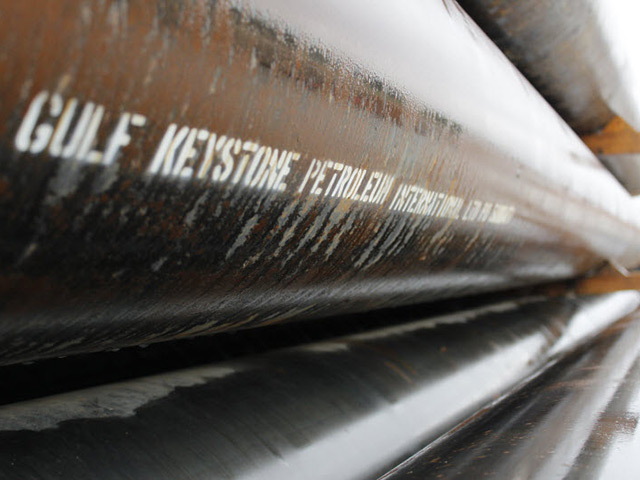
This week’s shutdown of the Keystone oil pipeline has stopped up the route for roughly a quarter of the crude flowing into the U.S. Midwest.
To which the oil market has essentially said: Eh.
TransCanada Corp. closed the pipeline that ships 590,000 barrels a day of Canadian crude to the U.S. over the weekend, responding to signs of a leak in South Dakota, and doesn’t expect to restart it until at least Tuesday. While there’s no good time for a shutdown, the move comes with American oil stockpiles near their highest level in eight decades, part of the worldwide glut that’s driven prices down more than 60 percent from a June 2014 high.
“It’s coming at a time when there is no shortage of crude in that part of the system,” said John Auers, executive vice-president of Turner Mason & Co., a Dallas-based consultant to the oil industry. “At a different time, the impact would be much greater.”
Crude Glut
U.S. crude stockpiles reached 534.8 million barrels over the past two months, the highest since 1930, and supplies in the Midwest swelled to a record. The U.S. drilling boom that helped produce the glut also led to a binge in railroad building, which has provided alternate routes for the oil even if the pipeline’s problems continue, Auers said.
That’s damped any worries over Keystone, which since 2011 has carried oil from Hardisty, Alberta, to storage and distribution hubs in Cushing, Oklahoma, and Pakota, Illinois. Another segment, which is still operating, runs from Cushing to the Texas Gulf Coast. TransCanada’s proposed Keystone XL line was denied a presidential permit. The existing one can carry about 26 percent of the 2.3 million Canadian barrels that flow each day into the Midwest, providing almost all of the region’s imported petroleum, said Andy Lipow, president of Houston-based Lipow Oil Associates LLC.
With supplies at Cushing, the delivery point for futures contracts traded on the New York Mercantile Exchange, near a record, prices barely budged.
There have been some modest impacts. Oil is backing up in Hardisty, Alberta, the starting point of the pipeline. Supplies there may increase by about 4 million barrels this week while the line is down, oil analysts at Genscape Inc. said Tuesday. Western Canadian Select heavy crude has dropped $1.05 a barrel versus the U.S. benchmark to a two-month low, according to data compiled by Bloomberg.
Phillips 66 has cut back production at its 336,000-barrel per day Wood River refinery as a result of the shutdown. Gasoline in the Chicago spot market has strengthened 2.5 cents a gallon this week relative to futures traded in New York.
“One of the things we don’t know is exactly how long the line is going to be down and we don’t know the extent of the spill,” Lipow said. “The longer it goes on, the more impact you will see to refinery supplies in the Illinois and Ohio river valleys.”